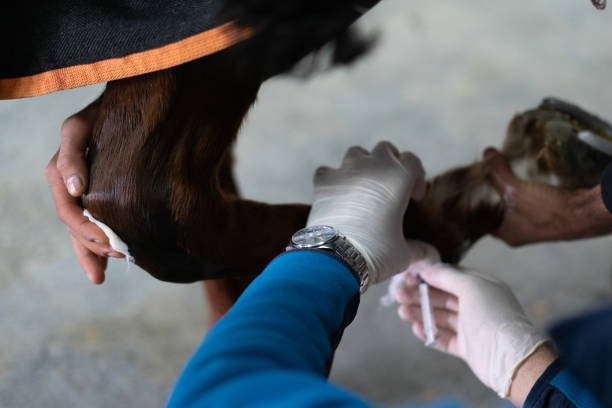
What Should I Expect During My Horse’s Lameness Exam?
Dealing with a lame horse can be an incredibly stressful experience for any horse owner. If your horse is showing signs of lameness, it’s crucial to understand what a lameness exam entails. Knowing what to expect during this procedure can significantly ease your worries and help you prepare adequately for the appointment with the vet. Proper preparation ensures that all necessary information and observations are communicated effectively to aid diagnosis.
1. Initial Consultation
The first step is the initial consultation with your veterinarian. This is where you’ll discuss your horse’s history, including any previous injuries or illnesses that could contribute to the current lameness. The vet will ask about the horse’s activities, workload, diet, and any noticeable changes in behavior or performance.
2. Observing the Horse at Rest
Once the initial discussion is complete, the vet will observe your horse while it’s at rest. This observation helps the vet identify any obvious abnormalities, such as swelling, uneven muscle tone, or abnormal posture. These preliminary observations can provide valuable clues about the potential causes of lameness.
3. Gait Analysis
Next comes the gait analysis, where the vet will observe your horse in motion. Typically, this includes walking and trotting on both soft and hard surfaces. The vet looks for irregularities in the horse’s stride, such as limping, head bobbing, or asymmetric movements. To help pinpoint the problem, the vet might use a series of flexion tests, in which they bend the horse’s limbs and then watch the horse move.
4. Palpation and Physical Examination
After observing the horse’s gait, the vet will perform a thorough palpation and physical examination. They will feel for heat, swelling, muscle atrophy, or any abnormal reactions from your horse while touching specific areas. This hands-on inspection can help locate the source of pain or discomfort.
5. Diagnostic Nerve Blocks
If the sources of lameness are still unclear, the vet may use diagnostic nerve blocks. These involve injecting a local anesthetic into specific areas to numb them temporarily. By observing changes in the horse’s movement after the injection, the vet can determine where the pain is coming from.
6. Imaging Techniques
To gather more detailed information, the vet may employ various imaging techniques. These can include:
-
X-rays: To examine bones and joints for fractures, arthritis, or other abnormalities.
-
Ultrasound: To assess soft tissues such as tendons and ligaments.
-
MRI or CT scans: For a comprehensive view of the horse’s internal structures.
-
Thermography: To detect areas of inflammation based on temperature variations.
7. Laboratory Tests
In some cases, the vet might recommend laboratory tests, such as blood work or joint fluid analysis. These tests can provide additional insights into underlying conditions that may be contributing to the lameness.
8. Reviewing the Findings
After all the tests and observations, the vet will review the findings with you. They will explain the potential causes of lameness and discuss the severity of the issue. Your vet may present a combination of possible diagnoses and suggest further tests if needed.
9. Treatment Options
Based on the diagnosis, the vet will discuss treatment options with you. Treatments may range from rest and rehabilitation to medications or even surgery in severe cases. Some veterinarians may also recommend equine acupuncture treatments as part of a comprehensive approach to managing your horse’s condition.
10. Creating a Recovery Plan
Once a treatment plan is determined, the vet will help you create a detailed recovery plan. This plan often includes specific instructions on rest, exercise, and follow-up care. The goal is to ensure your horse’s recovery is as smooth and effective as possible.
11. Monitoring Progress
Regular follow-ups with your vet are essential for monitoring your horse’s progress. The recovery process might require adjustments to the initial treatment plan based on how well your horse responds. Consistent communication with your vet ensures that any setbacks are quickly addressed.
12. Preventing Future Lameness
Preventing future episodes of lameness is just as important as treating the current issue. Your vet might guide expert equine lameness exams to catch potential issues early. They may also offer recommendations on diet, exercise routines, and best practices for maintaining your horse’s overall health.
When to Seek Help
Knowing when to seek professional help is essential. If your horse shows any signs of lameness, such as limping, reluctance to move, or abnormal posture, contact your vet immediately. Early intervention can significantly improve your horse’s recovery.
Be sure to check their home page for additional resources on lameness exams and comprehensive horse care.
Final Thoughts
A lameness exam involves a comprehensive assessment to identify and address the causes of your horse’s discomfort. By understanding the process and working closely with your vet, you can ensure your horse receives the best possible care. Remember, maintaining a proactive approach to your horse’s health can prevent many issues and contribute to their long-term well-being.
